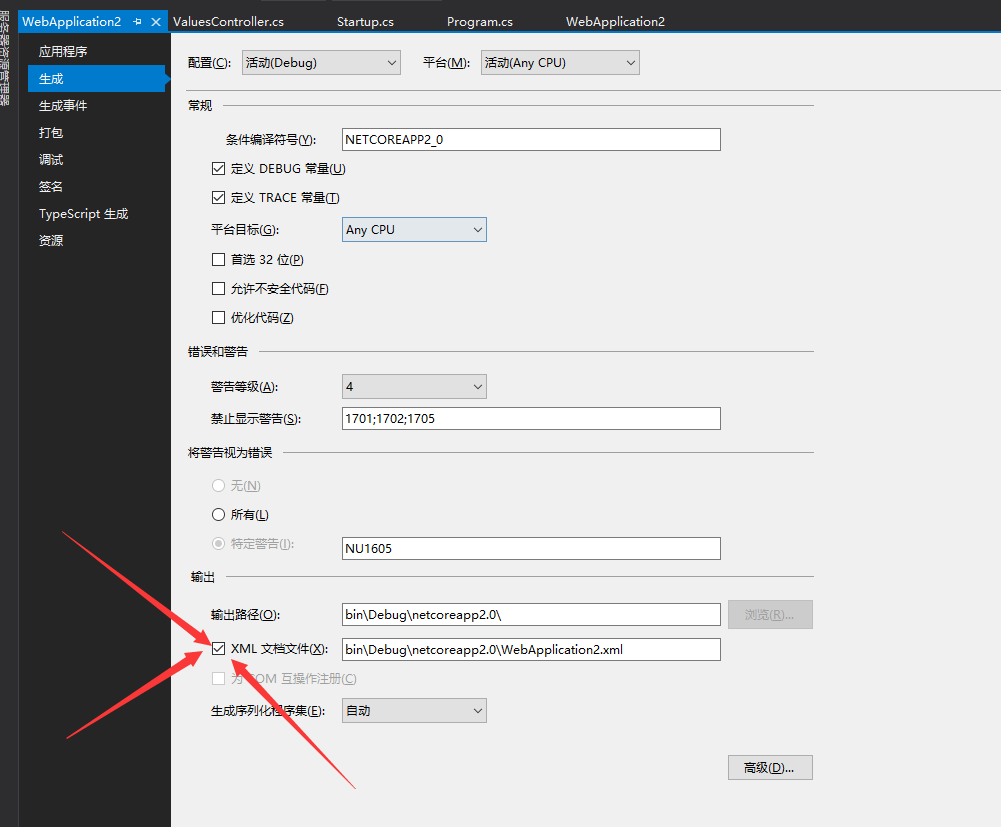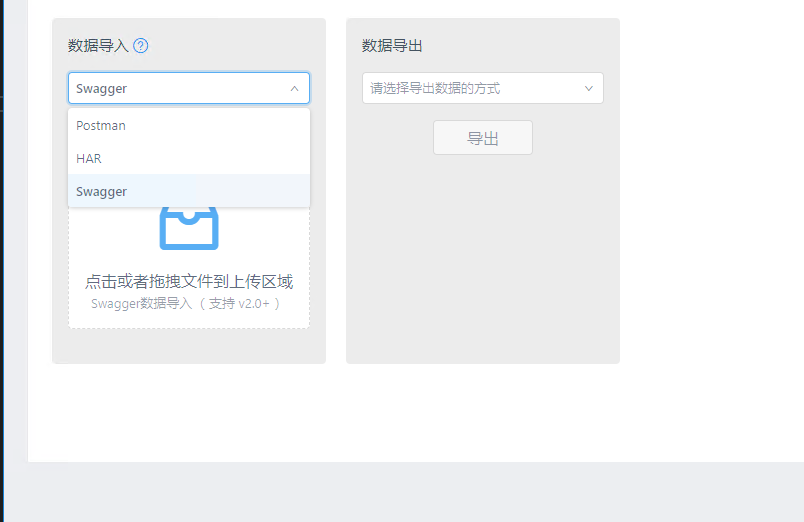您好,登錄后才能下訂單哦!
您好,登錄后才能下訂單哦!
這篇文章將為大家詳細講解有關.NET Core怎么利用swagger進行API接口文檔管理,小編覺得挺實用的,因此分享給大家做個參考,希望大家閱讀完這篇文章后可以有所收獲。
一、問題背景
隨著技術的發展,現在的開發模式已經更多的轉向了前后端分離的模式,在前后端開發的過程中,聯系的方式也變成了API接口,但是目前項目中對于API的管理很多時候還是通過手工編寫文檔,每次的需求變更只要涉及到接口的變更,文檔都需要進行額外的維護,如果有哪個小伙伴忘記維護,很多時候就會造成一連續的問題,那如何可以更方便的解決API的溝通問題?Swagger給我們提供了一個方式,由于目前主要我是投入在.NET Core項目的開發中,所以以.NET Core作為示例
二、什么是Swagger
Swagger可以從不同的代碼中,根據注釋生成API信息,swagger擁有強大的社區,并且對于各種語言都支持良好,有很多的工具可以通過swagger生成的文件生成API文檔
三、.NET Core中使用
.NET Core中使用首先要用nuget引用Swashbuckle.AspNetCore,在startup.cs中加入如下代碼
// This method gets called by the runtime. Use this method to add services to the container.
public void ConfigureServices(IServiceCollection services)
{
services.AddMvc();
services.AddSwaggerGen(c =>
{
c.SwaggerDoc("v1", new Info { Title = "Hello", Version = "v1" });
var basePath = PlatformServices.Default.Application.ApplicationBasePath;
var xmlPath = Path.Combine(basePath, "WebApplication2.xml");
c.IncludeXmlComments(xmlPath);
});
services.AddMvcCore().AddApiExplorer();
}
// This method gets called by the runtime. Use this method to configure the HTTP request pipeline.
public void Configure(IApplicationBuilder app, IHostingEnvironment env)
{
if (env.IsDevelopment())
{
app.UseDeveloperExceptionPage();
}
app.UseMvcWithDefaultRoute();
app.UseSwagger(c =>
{
});
app.UseSwaggerUI(c =>
{
c.ShowExtensions();
c.ValidatorUrl(null);
c.SwaggerEndpoint("/swagger/v1/swagger.json", "test V1");
});
}以上部分為加載swagger的代碼,位于startup.cs中,下面是controller代碼:
using System;
using System.Collections.Generic;
using System.Linq;
using System.Threading.Tasks;
using Microsoft.AspNetCore.Mvc;
namespace WebApplication2.Controllers
{
/// <summary>
/// 測試信息
/// </summary>
[Route("api/[controller]/[action]")]
public class ValuesController : Controller
{
/// <summary>
/// 獲取所有信息
/// </summary>
/// <returns></returns>
[HttpGet]
public IEnumerable<string> Get()
{
return new string[] { "value1", "value2" };
}
/// <summary>
/// 根據ID獲取信息
/// </summary>
/// <param name="id"></param>
/// <returns></returns>
// GET api/values/5
[HttpGet("{id}")]
public string Get(int id)
{
return "value";
}
/// <summary>
/// POST了一個數據信息
/// </summary>
/// <param name="value"></param>
// POST api/values
[HttpPost]
public void Post([FromBody]string value)
{
}
/// <summary>
/// 根據ID put 數據
/// </summary>
/// <param name="id"></param>
/// <param name="value"></param>
// PUT api/values/5
[HttpPut("{id}")]
public void Put(int id, [FromBody]string value)
{
}
/// <summary>
/// 根據ID刪除數據
/// </summary>
/// <param name="id"></param>
// DELETE api/values/5
[HttpDelete("{id}")]
public void Delete(int id)
{
}
/// <summary>
/// 復雜數據操作
/// </summary>
/// <param name="id"></param>
// DELETE api/values/5
[HttpPost]
public namevalue test(namevalue _info)
{
return _info;
}
}
public class namevalue
{
/// <summary>
/// name的信息
/// </summary>
public String name { get; set; }
/// <summary>
/// value的信息
/// </summary>
public String value { get; set; }
}
}接下來我們還需要在生成中勾上XML生成文檔,如圖所示

接下去我們可以運行起來了,調試,瀏覽器中輸入http://localhost:50510/swagger/,這里端口啥的根據實際情況來,運行效果如下圖所示:

可以看到swagger將方法上的注釋以及實體的注釋都抓出來了,并且顯示在swaggerui,整體一目了然,并且可以通過try it按鈕進行簡單的調試,但是在具體項目中,可能存在需要將某些客戶端信息通過header帶到服務中,例如token信息,用戶信息等(我們項目中就需要header中帶上token傳遞到后端),那針對于這種情況要如何實現呢?可以看下面的做法
// This method gets called by the runtime. Use this method to add services to the container.
public void ConfigureServices(IServiceCollection services)
{
services.AddMvc();
services.AddSwaggerGen(c =>
{
c.SwaggerDoc("v1", new Info { Title = "Hello", Version = "v1" });
var basePath = PlatformServices.Default.Application.ApplicationBasePath;
var xmlPath = Path.Combine(basePath, "WebApplication2.xml");
c.IncludeXmlComments(xmlPath);
c.OperationFilter<AddAuthTokenHeaderParameter>();
});
services.AddMvcCore().AddApiExplorer();
} public class AddAuthTokenHeaderParameter : IOperationFilter
{
public void Apply(Operation operation, OperationFilterContext context)
{
if (operation.Parameters == null)
{
operation.Parameters = new List<IParameter>();
}
operation.Parameters.Add(new NonBodyParameter()
{
Name = "token",
In = "header",
Type = "string",
Description = "token認證信息",
Required = true
});
}
}我們在ConfigureServices添加了OperationFilter<AddAuthTokenHeaderParameter>() ,通過這種方式我們可以在swagger中顯示token的header,并且進行調試(如圖所示),AddAuthTokenHeaderParameter 的apply的屬性context中帶了controller以及action的各種信息,可以配合實際情況使用

四、與其他API管理工具結合
swagger強大的功能以及社區的力量,目前很多的API管理工具都支持YApi,目前我們使用的是由去哪兒開源的YApi,從圖中可以看到YApi支持導入swagger生成的JSON文件,除該工具 之外DOClever(開源)也是一個不錯的API管理工具,也支持Swagger文件導入(具體工具用法,大家可以去看他們的官網)

五、總結
Swagger是一個很好的工具,并且在前后端分離開發越來越流行的情況下,在后續的開發過程中,我覺得會扮演著越來越重要的作用,目前我們公司小的項目已經準備開始使用swagger+yapi進行API的管理方式,而這篇文章也是這段時間抽空整理API管理的結果,希望可以幫助到大家,這里可能有很多不足的地方,歡迎大家拍磚,也希望可以跟大家一起進步
關于“.NET Core怎么利用swagger進行API接口文檔管理”這篇文章就分享到這里了,希望以上內容可以對大家有一定的幫助,使各位可以學到更多知識,如果覺得文章不錯,請把它分享出去讓更多的人看到。
免責聲明:本站發布的內容(圖片、視頻和文字)以原創、轉載和分享為主,文章觀點不代表本網站立場,如果涉及侵權請聯系站長郵箱:is@yisu.com進行舉報,并提供相關證據,一經查實,將立刻刪除涉嫌侵權內容。